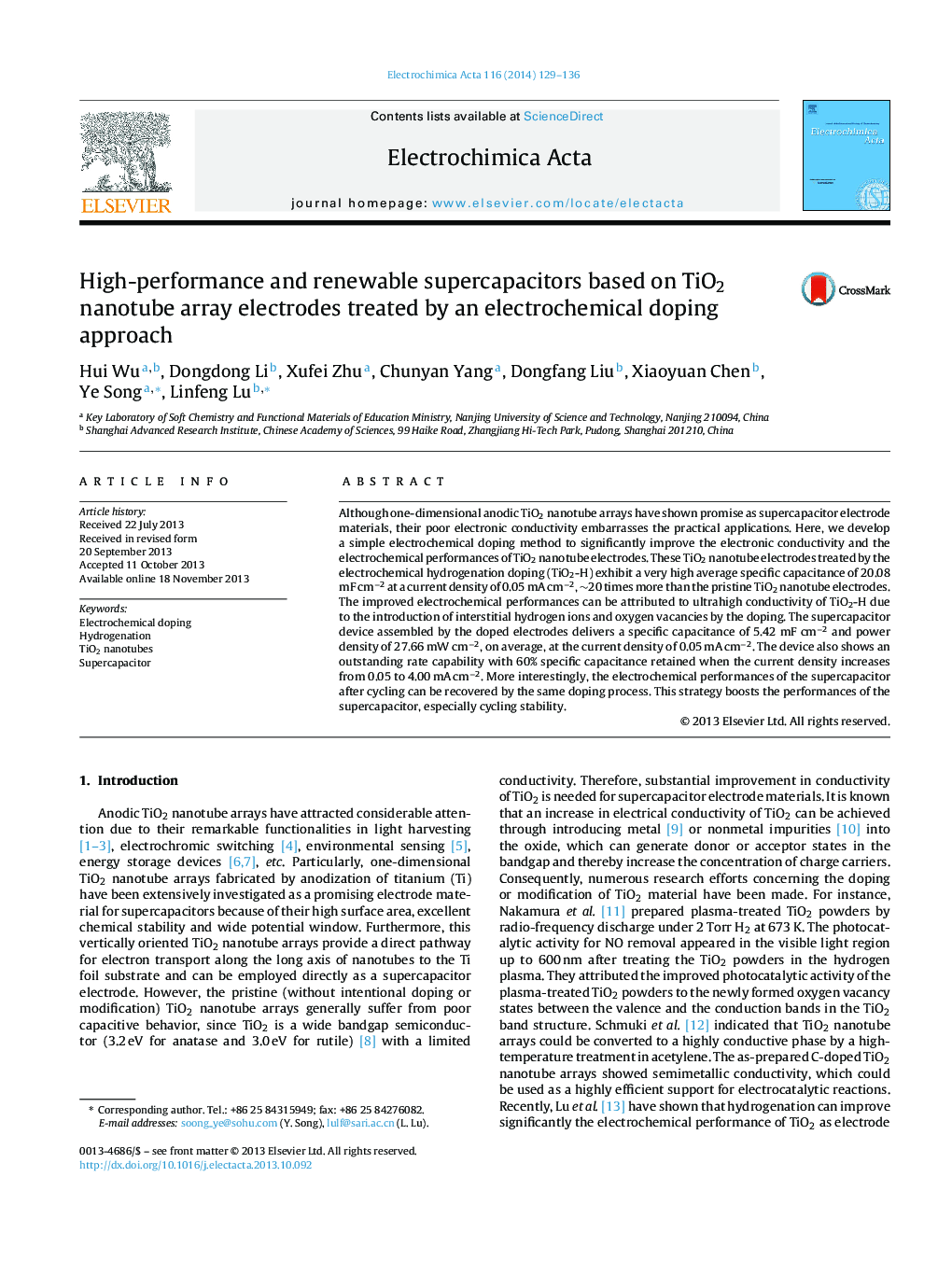| Article ID | Journal | Published Year | Pages | File Type |
|---|---|---|---|---|
| 6613974 | Electrochimica Acta | 2014 | 8 Pages |
Abstract
Although one-dimensional anodic TiO2 nanotube arrays have shown promise as supercapacitor electrode materials, their poor electronic conductivity embarrasses the practical applications. Here, we develop a simple electrochemical doping method to significantly improve the electronic conductivity and the electrochemical performances of TiO2 nanotube electrodes. These TiO2 nanotube electrodes treated by the electrochemical hydrogenation doping (TiO2-H) exhibit a very high average specific capacitance of 20.08 mF cmâ2 at a current density of 0.05Â mAÂ cmâ2, â¼20 times more than the pristine TiO2 nanotube electrodes. The improved electrochemical performances can be attributed to ultrahigh conductivity of TiO2-H due to the introduction of interstitial hydrogen ions and oxygen vacancies by the doping. The supercapacitor device assembled by the doped electrodes delivers a specific capacitance of 5.42 mF cmâ2 and power density of 27.66 mW cmâ2, on average, at the current density of 0.05Â mAÂ cmâ2. The device also shows an outstanding rate capability with 60% specific capacitance retained when the current density increases from 0.05 to 4.00Â mAÂ cmâ2. More interestingly, the electrochemical performances of the supercapacitor after cycling can be recovered by the same doping process. This strategy boosts the performances of the supercapacitor, especially cycling stability.
Related Topics
Physical Sciences and Engineering
Chemical Engineering
Chemical Engineering (General)
Authors
Hui Wu, Dongdong Li, Xufei Zhu, Chunyan Yang, Dongfang Liu, Xiaoyuan Chen, Ye Song, Linfeng Lu,
